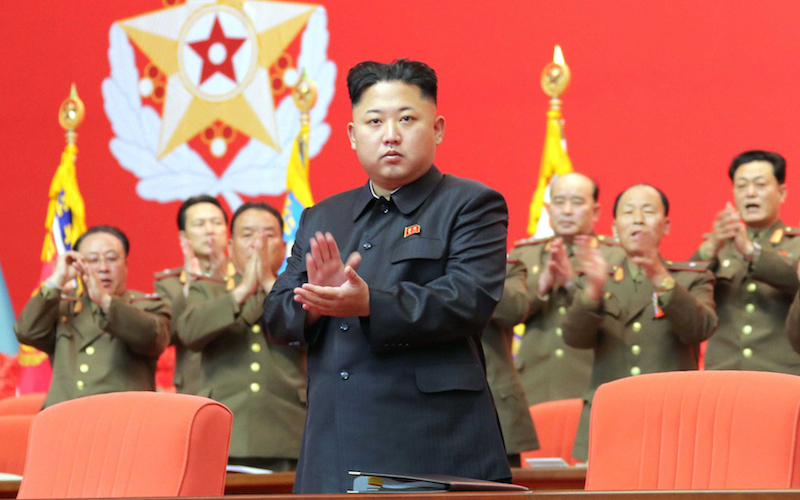
Is the NPT Irrelevant?
The Non-Proliferation Treaty (NPT), despite being discriminatory and fragile, has sustained its existence and currently enjoys near-universal membership. In March 1970, the NPT came into effect and since then has provided a foundation for legal and political efforts to curb the spread of nuclear weapons. The NPT is a nearly universal (except for India, Pakistan, Israel and North Korea) treaty and the linchpin of the global nonproliferation regime.
The NPT is a bargain between NWSs (nuclear weapons states) and NNWSs (non-nuclear weapons states) in which NWSs (the United States, Russia, France, UK and China) agreed to share nuclear technology for peaceful purposes and gradually disarm their nuclear arsenals while NNWSs agreed not to develop nuclear weapons and to accept IAEA (International Atomic Energy Agency) safeguards. It is pertinent to ask why the NPT, despite its imposition of unequal rights, has survived so long and why the membership has grown to be nearly universal.
In 1963 President Kennedy warned that 15 to 25 nations could possess nuclear weapons within a decade. Forty-four years later, mostly due to the NPT, only nine countries have reached the nuclear-weapon threshold. Forty-four countries are considered to be capable of producing nuclear weapons, but have decided not to develop them. The states that tried to develop them reversed the status of their nuclear arsenals.
In this regard, the treaty is a success. The NPT has provided a mechanism to monitor the nuclear related activities. The treaty and the IAEA safeguards have provided the tools to limit the spread of nuclear weapons. Most of the literature has focused on the failures of the treaty but it is important that the successes should equally be focused on to understand the reasons of these successes and how best these lessons can be implemented to prevent further proliferation.
For most scholars, there has long been a broad consensus that the NPT either has failed or is on the verge of failure. It is long been argued that the treaty will inevitably collapse resulting in a proliferation cascade. The consistency in these pessimistic predictions is remarkable. Such predictions were most frequent in the aftermath of each proliferation crises. India’s nuclear test in 1974, the Iraq revelations of a clandestine nuclear program in the early 1990s, the 1998 South Asian nuclear tests, the discovery of the A. Q. Khan network, the North Korean withdrawal from the treaty and most recently the controversy regarding Iran’s nuclear program, have generated a large scale analysis about the demise of the treaty and/or a wave of new weapons states.
If the NPT has no direct causal effects on its members to abstain from the nuclear option, the question arises why the pace of nuclear proliferation over the last four decades has been relatively slow. The explanation for non-proliferation must be found outside the treaty framework. There is little doubt that the NPT regime worked well during the Cold War period not because the regime itself exerted some direct effects on its members but rather because the two superpowers had a convergence of interest in creating and maintaining the treaty. There was a common understanding that the world with more nuclear weapons would be much more difficult and dangerous. The history of the NPT points to the fact that many states joined the NPT because of the persuasive powers of the Americans and the Soviets.
The NWSs joined the NPT because it has not only legitimized their nuclear weapons program but also has provided them an effective means to maintain their nuclear dominance. The question arises why the NNWSs joined this discriminatory treaty. There are three types of states that joined the NPT as NNWSs. Small states that lacked the financial and technical capacity to obtain nuclear weapons and therefore, strongly supported the treaty. Medium states with existential threats joined the NPT because of their reliance on the nuclear protection of others. The moral or legal obligations of the treaty were not important rather nuclear protection gave them a cheaper option for their security. Medium states with an existential threat without nuclear protection join the NPT because of their relations with the United States and economic and political interests.
More states have opted to give up their nuclear pursuit than have maintained their arsenals. Both realpolitik and moral factors were important in the abolishment of their nuclear programs. After the Cold War, financial assistance was offered to Belarus and Ukraine in exchange for the abolishment of their nuclear stockpiles; technical assistance played an importance role in the case of Brazil; and regime change in South Africa explains its denuclearization. Libya was offered an end to its international isolation and the normative component of the non-proliferation norm and economic interests triumphed in the case of Sweden and Switzerland.
The treaty provides legal justification for coercive sanctions when a state tries to acquire nuclear weapons under the cover of the NPT. The violation of the treaty results in coercive economic and military sanctions and isolation. The NPT requires the NWSs to negotiate in good faith to disarm their nuclear arms. The lack of success on this pledge has prompted the NNWSs to reframe their demand for nuclear disarmament with references to the humanitarian consequences of the use of nuclear weapons, international law, and international humanitarian law. This keeps pressure on the NWSs to negotiate and conclude arms control agreement.
The NPT is still considered a legitimate treaty by the majority of states. Even Iran strategically adopts the discourse of the NPT to better pursue its interest. Iran justifies its uranium enrichment program consistent with Article IV of the NPT, which allows developing nuclear technologies for peaceful purposes. Even while breaking the rules, Iran defends its actions as being within the limits of what is permitted in the NPT. This reflects the understanding that the NPT and its rules have become the norm through which Iran protects its interest and the international community justifies its actions against Iran.
The continued long-term viability of the treaty can only be assured through political determination. The treaty is considered as legitimate but the reluctance of the NWSs to disarm their nuclear weapons has created a legitimacy crisis. Nuclear states must address the legitimacy crisis by concluding nuclear arms agreements, such as the CTBT (Comprehensive Test Ban Treaty) and FMCT (Fissile Material Control Treaty) that complement the NPT. During the Cold War the success of the NPT can be attributed to the cooperation of major powers but in the post-Cold War era the major actors have a divergence of interests. For major actors like Russia and China a multipolar nuclear world would upset US dominance.
Without the cooperation of major states it is unlikely that the NPT will be an effective barrier against nuclear proliferation. The NWSs must take a leadership role to address the conflicts in the Middle East, in South East Asia, and on the Korean Peninsula, and they must also take practical steps for eventual disarmament of their nuclear weapons. It is important not to risk the viability of the treaty, which for the past forty-four years has provided an enduring framework to curb nuclear proliferation and has saved the world from the horrors of nuclear use.

